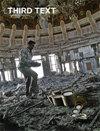A Partial History of South–South Art Criticism
IF 0.1
3区 艺术学
0 ART
引用次数: 0
Abstract
Abstract From 1981 to 1990, the Australian art journal Art & Text and the affiliated Art & Criticism Monograph Series had a productive, if at times fragmented, relationship with a small but influential group of Chilean arts workers during the Pinochet regime (1973–1990). Initiated by the Australian-Chilean artist, Juan Dávila, this collaboration — including key figures such as Paul Taylor, Paul Foss, Nelly Richard, Patricio Marchant and Francisco Zegers − gave rise to multiple and significant essays, books and translations that contested the limits of Pinochet’s epistemological frontiers on the one hand, and Euro-North American centrist readings of the artworld on the other. This article returns to several archives across Australia and Chile to trace the simultaneous developments of southern thinking, and asks what can be learned about the co-production of epistemologies across two distinct Pacific locations. The almost instant anachronism of art criticism, especially that on the margins, has meant that Art & Text’s and the Art & Criticism Monograph Series’s history of supporting Chilean art writing during the dictatorship has not been effectively transmitted into the present. It is, by now, pretty much unknown or forgotten in both Australia and Chile − and elsewhere − awaiting the attention of a younger generation of art workers hoping to connect to these fragmented histories.南南艺术批评部分史
摘要从1981年到1990年,澳大利亚艺术杂志《艺术与文本》及其附属的《艺术与批评专著系列》在皮诺切特政权(1973年至1990年)期间与一小群智利艺术工作者建立了富有成效的关系,尽管有时是零散的。这一合作由澳大利亚-智利艺术家胡安·达维拉发起,包括保罗·泰勒、保罗·福斯、内莉·理查德、帕特里西奥·马尚特和弗朗西斯科·泽格斯等关键人物,产生了多篇重要的文章、书籍和翻译,一方面挑战了皮诺切特认识论前沿的局限性,另一方面,欧洲-北美中间派对艺术世界的解读。这篇文章回到了澳大利亚和智利的几个档案馆,追溯了南方思想的同时发展,并询问了在两个不同的太平洋地区共同生产认识论可以学到什么。艺术批评,尤其是边缘艺术批评,几乎立即出现了时代错误,这意味着《艺术与文本》和《艺术与批评专著系列》在独裁时期支持智利艺术写作的历史并没有有效地传播到现在。到目前为止,它在澳大利亚、智利以及其他地方几乎不为人知或被遗忘,等待着希望与这些支离破碎的历史联系起来的年轻一代艺术工作者的关注。
本文章由计算机程序翻译,如有差异,请以英文原文为准。
求助全文
约1分钟内获得全文
求助全文
来源期刊

Third Text
ART-
CiteScore
0.40
自引率
0.00%
发文量
39
期刊介绍:
Third Text is an international scholarly journal dedicated to providing critical perspectives on art and visual culture. The journal examines the theoretical and historical ground by which the West legitimises its position as the ultimate arbiter of what is significant within this field. Established in 1987, the journal provides a forum for the discussion and (re)appraisal of theory and practice of art, art history and criticism, and the work of artists hitherto marginalised through racial, gender, religious and cultural differences. Dealing with diversity of art practices - visual arts, sculpture, installation, performance, photography, video and film.
 求助内容:
求助内容: 应助结果提醒方式:
应助结果提醒方式:


